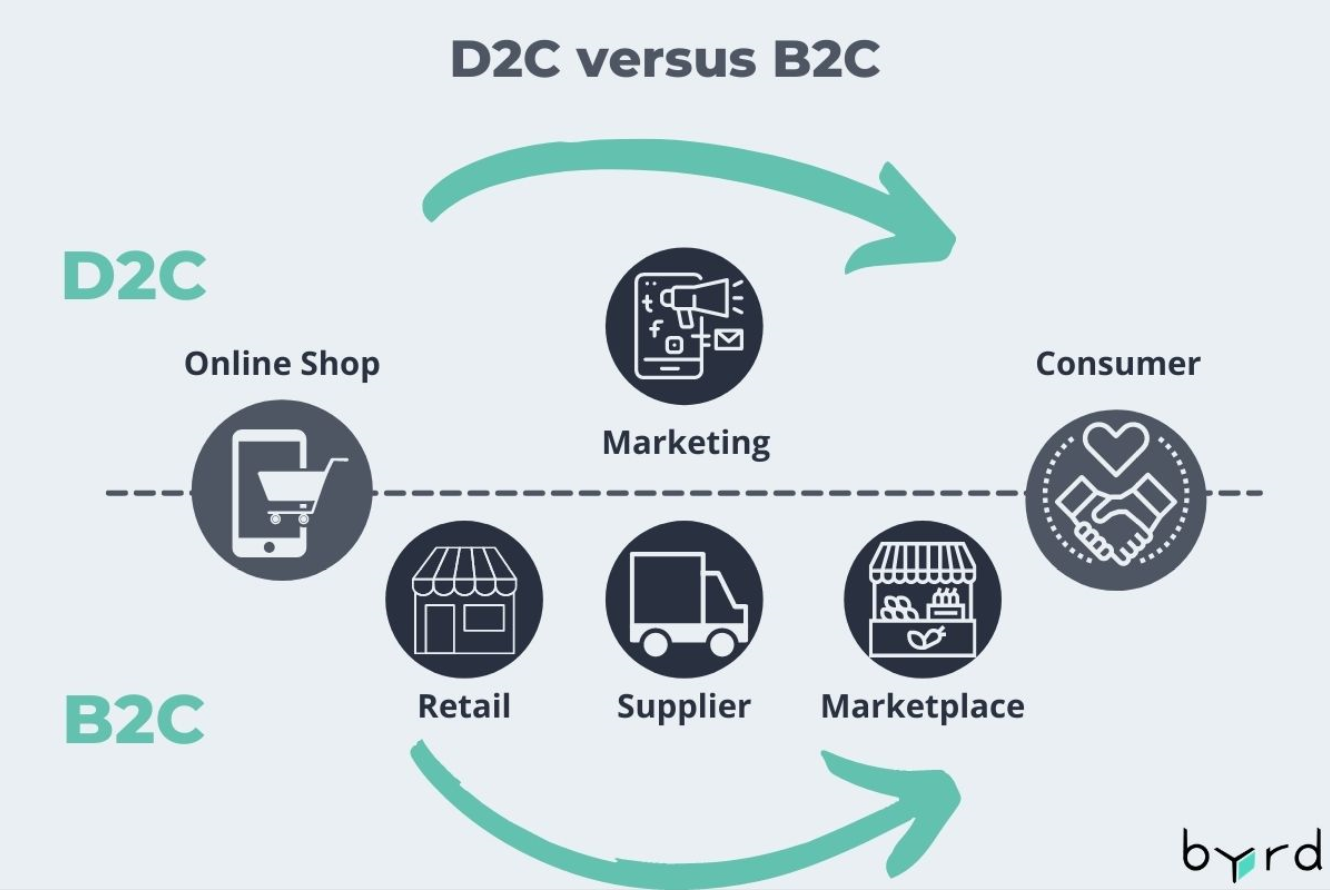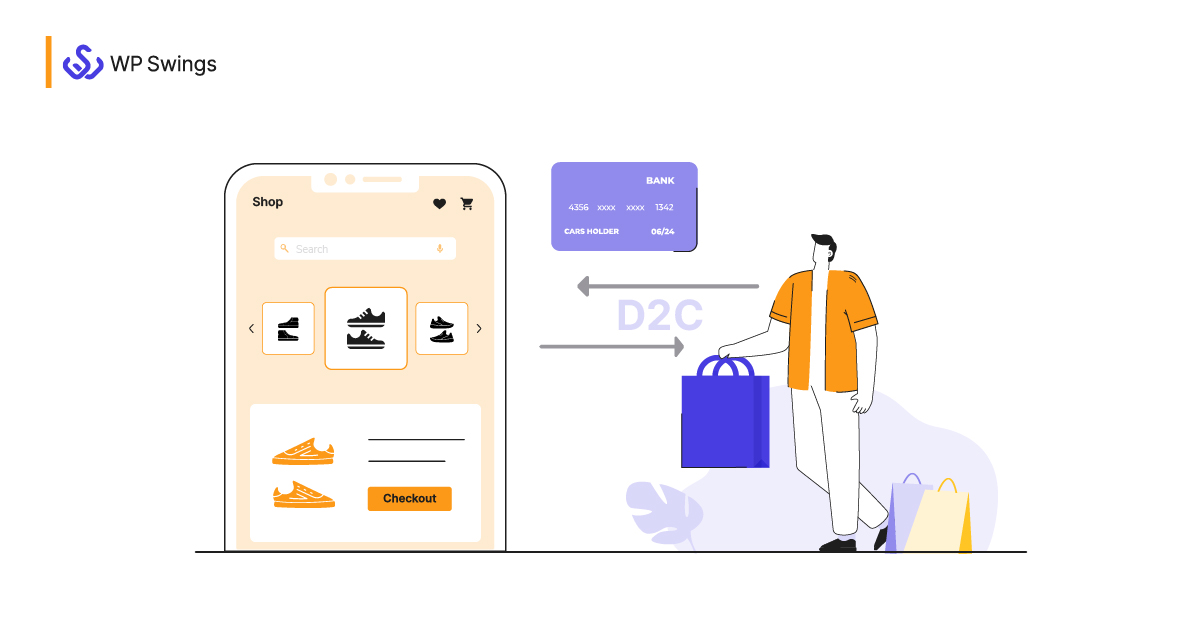5 Signs Your Business Needs a D2C Ecommerce Agency Now
Exploring the Potential of D2C Ecommerce: A Comprehensive Overview for Companies
The D2C ecommerce model provides a considerable change in how brand names engage with customers. It allows companies to bypass typical retail channels, fostering much deeper links and possibly boosted revenue margins. However, this approach is not without its complexities. Understanding the nuances of D2C ecommerce is important for brand names aiming to thrive. What methods can they adopt to browse this evolving landscape properly? The solutions might redefine their organization techniques.
Comprehending the D2C Ecommerce Design

Key Perks of D2C Ecommerce for Brands
The D2C ecommerce design uses brands substantial advantages, particularly concerning increased revenue margins. By getting rid of middlemans, firms can retain a larger share of sales profits. Additionally, this straight connection with clients cultivates improved brand loyalty, encouraging repeat purchases and long-lasting interaction.
Boosted Revenue Margins

Improved Brand Name Loyalty
Building on the economic advantages of D2C ecommerce, enhanced brand name commitment becomes one more essential benefit for firms involving directly with consumers. By developing a direct connection, brands can promote much deeper connections with their customers, getting understandings right into behaviors and preferences. This direct communication allows for more tailored advertising and marketing approaches, which reverberate highly with consumers. In addition, brands have the opportunity to control their messaging and consumer experience, reinforcing brand name values and building depend on. When customers really feel a personal link, they are more probable to return, advocate for the brand, and participate in neighborhood engagement. Ultimately, enhanced brand name loyalty not only drives repeat acquisitions however additionally grows a passionate client base, further strengthening a brand name's setting in the market.
Difficulties Faced by D2C Brands
D2C brands run into several significant challenges that can influence their success. Supply management problems can result in equip shortages or excess, complicating operations and consumer complete satisfaction. In addition, advertising spending plan restrictions commonly limit the capability to efficiently get to and engage target market.
Supply Management Issues
Efficient supply management offers a powerful difficulty for many brands running in the direct-to-consumer (D2C) area. These brands commonly come to grips with varying demand, which can result in overstock or stockouts, eventually influencing customer complete satisfaction and revenue. Additionally, the absence of advanced supply radar can cause inconsistencies between actual supply degrees and reported information, complicating order fulfillment. The diverse series of products D2C brand names commonly provide also complicates supply management, as variants in designs, colors, and sizes call for even more thorough oversight. Numerous D2C services may struggle with minimal warehousing capabilities, leading to ineffective use of room and resources. As a result, effective inventory monitoring remains a crucial difficulty for D2C brands intending for lasting growth and operational effectiveness.
Advertising Budget Plan Constraints
Steering marketing spending plan constraints is a considerable difficulty for many direct-to-consumer (D2C) brand names. Restricted funds frequently limit these firms' ability to purchase all-encompassing advertising techniques, causing lowered visibility in a competitive market. D2C brand names regularly grapple with the requirement to make the most of roi (ROI) while targeting particular audiences effectively. This obstacle is exacerbated by rising prices in digital advertising and the requirement to allocate funds throughout numerous networks, including social media sites, internet search engine, and e-mail advertising. Several D2C brand names need to innovate economical advertising services, leveraging natural development approaches and influencer collaborations. Eventually, effectively steering these budget plan constraints is necessary for maintaining development and attaining long-term earnings in the advancing ecommerce landscape.
Techniques for Developing a Successful D2C Ecommerce Company
As customers progressively seek straight connections with brand names, developing an effective D2C ecommerce organization requires a calculated technique that prioritizes customer engagement and depend on. One reliable technique is to produce compelling brand narratives that reverberate with target audiences, fostering psychological links. Utilizing social media sites platforms can boost visibility and facilitate two-way communication, allowing brand names to involve directly with customers.Moreover, individualized experiences with tailored advertising initiatives can greatly improve consumer retention and loyalty. Applying loyalty programs and using special deals can additionally incentivize repeat purchases.Streamlining the acquiring procedure is necessary, ensuring an easy to use user interface that boosts the purchasing experience. In addition, transparent communication concerning shipping and returns develops trust fund and urges customer confidence.Finally, actively seeking client comments and replying to it shows a dedication to enhancement and consumer contentment, important elements in the competitive D2C landscape.
Leveraging Modern Technology for Enhanced Customer Experience
In today's competitive D2C ecommerce landscape, innovation plays a crucial role in shaping consumer experiences. Organizations progressively utilize advanced devices such as fabricated intelligence, chatbots, and customized formulas to improve communications and streamline the buying procedure. By integrating these modern technologies, brand names can offer customized item suggestions based on specific preferences and purchasing behaviors, fostering a much more interesting experience.Moreover, receptive web site designs and mobile applications ensure that customers can access services perfectly across numerous devices. Boosted payment remedies, including one-click check outs and electronic pocketbooks, further simplify deals, making it simpler for consumers to make purchases.Data analytics also makes it possible for services to collect insights into client habits, enabling continuous renovation of offerings and solutions. In general, leveraging innovation not only improves client satisfaction yet also grows loyalty, ultimately driving long-term success in the D2C ecommerce sector.
Advertising And Marketing Strategies to Drive D2C Sales
Exactly how can brands effectively catch the attention of consumers in a saturated market? To grow in the direct-to-consumer (D2C) landscape, brand names should use targeted advertising and marketing strategies. Using social media systems, brands can involve customers with interactive web content, influencer collaborations, and user-generated articles. Customized e-mail projects can also foster a sense of link, providing customized promos based upon customer behavior and preferences.Moreover, narration read more plays an important function in separating a brand name's story, making it relatable and remarkable. Brands must invest in search engine optimization (SEARCH ENGINE OPTIMIZATION) to enhance visibility, guaranteeing their items are conveniently visible online. In addition, leveraging data analytics allows services to refine their advertising and marketing strategies and recognize consumer patterns better. Inevitably, a multi-channel technique that combines imagination with data-driven understandings can greatly enhance D2C sales, permitting brand names to stand out in a crowded marketplace.
Future Fads in D2C Ecommerce
With the rapid development of innovation and customer choices, the future of D2C ecommerce is positioned for substantial change. Emerging patterns indicate a change towards hyper-personalization, where brand names take advantage of data analytics to customize offerings to individual consumer needs. This modification improves consumer experiences, promoting loyalty and engagement.Moreover, sustainability is coming to be a crucial element, with customers progressively favoring brands that prioritize environmentally friendly methods - D2C Ecommerce Agency. Business are expected to adopt transparent supply chains and lasting products to satisfy this demand.The combination of expert system and increased truth will in addition transform the shopping experience, enabling consumers to imagine items in their environments prior to acquisition. Furthermore, social commerce is expected to grow, as platforms like Instagram and TikTok promote seamless buying experiences directly within social media.These patterns jointly indicate a vibrant future for D2C ecommerce, stressing customer-centric techniques and ingenious innovations that redefine customer communications
Often Asked Inquiries
What Industries Advantage The Majority Of From D2C Ecommerce?
The current inquiry highlights sectors that thrive through direct-to-consumer (D2C) ecommerce. Extremely, style, charm, electronics, and food markets take advantage of D2C models to enhance brand loyalty, boost customer relationships, and enhance earnings margins effectively.
Exactly How Do Delivering Expenses Influence D2C Pricing Techniques?
Shipping prices considerably influence D2C pricing strategies. Companies need to stabilize these costs with competitive pricing, taking into consideration client assumptions and revenue margins. Reliable administration of delivery can improve client complete satisfaction and drive sales in direct-to-consumer designs.
What Payment Choices Should D2C Companies Deal?
D2C companies must use diverse payment choices, consisting of credit/debit cards, electronic pocketbooks, and buy now, pay later on solutions. This range enhances consumer ease, increases conversion rates, and accommodates various consumer preferences in the on the internet purchasing landscape.
Just How Can D2C Brands Handle Consumer Returns Properly?
D2C brand names can deal with consumer returns efficiently by applying easy to use return policies, providing pre paid delivery tags, and guaranteeing punctual reimbursements (D2C Ecommerce Agency). Clear communication and streamlined procedures boost consumer contentment and urge repeat company
What Lawful Factors To Consider Exist for D2C Ecommerce Workflow?
Lawful factors to consider for D2C ecommerce operations include conformity with customer defense laws, data personal privacy guidelines, copyright rights, and taxes requirements. Brands should browse these complexities to prevent lawful pitfalls and ensure smooth operations. By removing middlemans, D2C brands can supply affordable prices and cultivate an extra intimate partnership with their customers.The D2C version is identified by its dependence on electronic systems, enabling brand names to make use of social media, online industries, and their very own web sites to involve with customers straight. D2C ecommerce facilitates the collection of useful consumer data, allowing brand names to customize their offerings and advertising and marketing techniques effectively, eventually driving sales and increasing margins. In addition, brands have the opportunity to manage their messaging and client experience, reinforcing brand name values and constructing depend on. As consumers increasingly seek straight links with brands, establishing an effective D2C ecommerce service needs a critical strategy that prioritizes consumer engagement and count on. D2C brand names can take care of consumer returns successfully by implementing user-friendly return plans, providing prepaid delivery labels, and making sure prompt refunds.